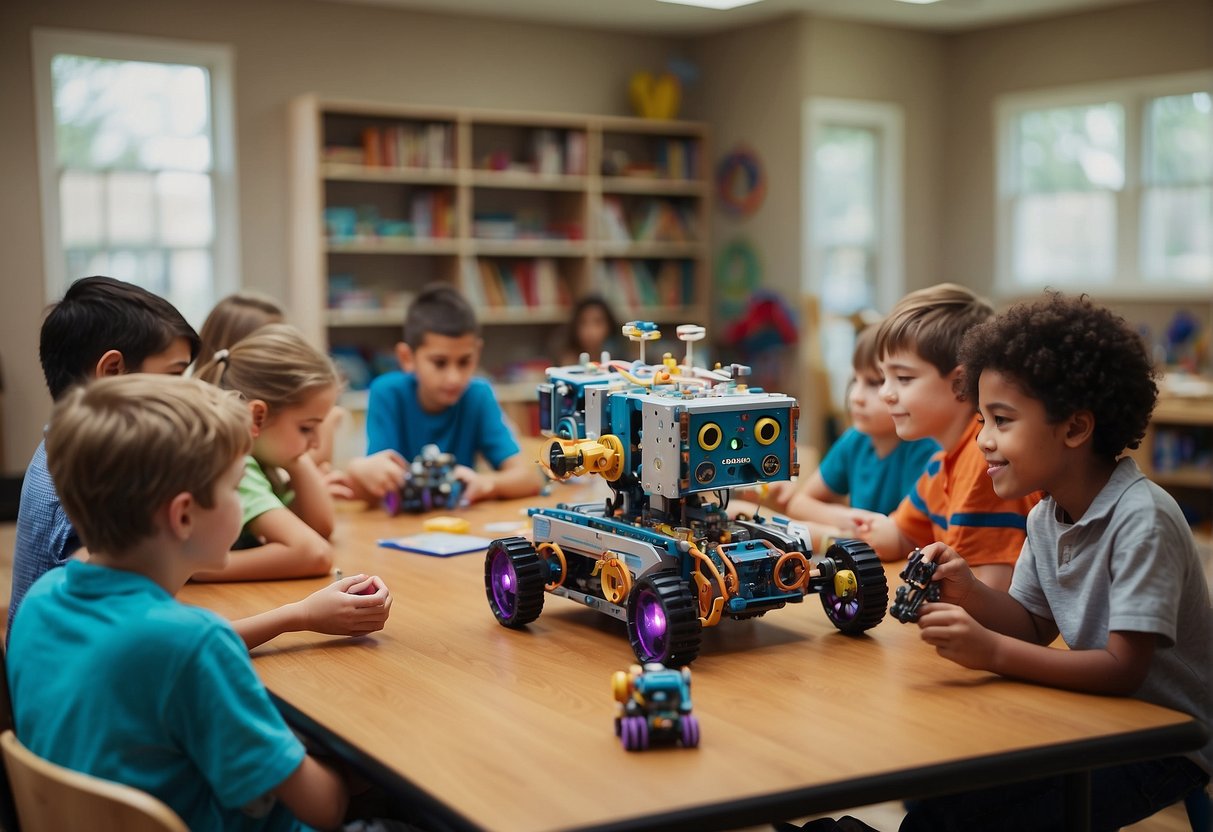Curious about What is Robotics for Kids? It’s a fantastic journey into the world of tech where creativity meets coding and engineering. Robotics for kids isn’t just about building robots; it’s a doorway to developing critical thinking, problem-solving, and even teamwork. Whether it’s programming their first bot to follow commands or constructing a mechanical friend from scratch, kids learn valuable skills that go beyond the classroom. Let’s delve into this exciting field where young minds are inspired to innovate and imagine the possibilities of the future!
Understanding Robotics

Robotics is a fascinating fusion of science, engineering, and technology that captures your imagination and creativity. It’s an invitation to explore a world where you can design, build, and program machines capable of completing tasks, both simple and complex.
Introduction to Robotics
Robotics integrates various fields to create intelligent machines known as robots. These robots can range from simple automated mechanisms to complex systems equipped with artificial intelligence. For kids, the encounter with robotics is often the spark that ignites an interest in STEM (Science, Technology, Engineering, and Mathematics), offering a playful yet educational experience.
The Importance of STEM in Robotics
STEM plays a crucial role in the field of robotics. Your grasp of science and mathematics is essential to understanding how robots interact with their environment. Technology and engineering are the pillars that support the design and construction of robotic systems. Engaging with robotics equips you with problem-solving skills and fosters innovative thinking—a valuable asset in any STEM-related activity.
Core Concepts of Robotics for Kids
To dive into robotics, you need to get familiar with its core concepts. First, mechanical engineering provides insight into how your robot will move and operate physically. Then, electrical engineering covers the circuits and power systems that bring your robot to life. Additionally, electronics play a part in the sensors and controllers used. Finally, a touch of artificial intelligence can be introduced to make robots capable of decision-making and learning from experiences.
Tools and Technologies in Robotics
When you engage with robotics, you utilize a variety of tools and technologies. From simple construction kits that require no coding to more advanced platforms where you program your robot using languages like Python or Scratch. The rise of affordable microcontroller boards and easy-to-use interfaces has made robotics more accessible than ever, allowing you to transform your innovative ideas into tangible projects.
By exploring robotics, you delve into an interdisciplinary field that not only entertains but educates, laying the groundwork for future pursuits in various scientific and engineering disciplines.
Getting Started with Robotics for Kids

Embarking on the journey of robotics can be a transformative experience for a child. It offers an intriguing blend of problem-solving, coding, and creativity. Through hands-on kits and guided learning, your child can be introduced to essential STEM fields like engineering and computer science.
Choosing the Right Robotics Kits
When beginning in robotics, the right kit is essential. Kits vary in complexity and are often tailored to different age groups and skill levels. For example, the LEGO Mindstorms EV3 is suited for those who are new yet passionate about building and programming. It’s compatible with multiple operating systems, making it accessible for most users. Assess the materials included for their quality and how they align with your child’s abilities. Consider the Makeblock mBot Ranger 3-in-1 as another versatile option for novices eager to tackle projects and learn to code using a platform like Scratch or Arduino.
Learning Programming and Coding Fundamentals
Programming is a core aspect of robotics; therefore, learning to code is a must. Simple interfaces such as Scratch provide an excellent starting point for younger learners. It’s a visual programming language that makes understanding the basics more intuitive. As skills advance, tools like Arduino offer a more in-depth coding experience. It’s beneficial to find resources that make learning engaging, such as online tutorials or interactive platforms like Micro that simplify the assembly and coding process for robotics projects.
Robotics Classes and Community
Guidance and support are crucial, which is why robotics classes provide an invaluable resource for both parents and beginners. There are various in-person and virtual options – for instance, MakerKids offers virtual classes that cater to different age groups and foster an engaging learning environment. Beyond formal education, joining a community can greatly enhance your child’s learning experience. A community offers teamwork opportunities, shared resources, and collective problem-solving that can reinforce lessons learned in class and from kits like Sphero BOLT.
Exploring Advanced Robotics

In the realm of robotics for kids, venturing into advanced robotics opens up doors to innovative technologies and real-world problem-solving skills. Here you’ll learn how to take your understanding of robotics to the next level.
Participating in Robotics Competitions
Engaging in robotics competitions offers a practical avenue for you to apply your coding and design skills. Events like FIRST LEGO League challenge you to build and program robots using LEGO Mindstorms EV3 kits, fostering your critical thinking and problem-solving abilities. Through these competitions, you also enhance your teamwork and communication skills, as collaboration is key to success.
Real-World Applications of Robotics
Beyond competitions, robotics has numerous applications that affect our daily lives. For instance, NASA employs sophisticated rovers for Mars exploration, which are outstanding examples of how robotics combine actuators, controllers, and programming to achieve complex tasks. Robotics technologies also extend to healthcare, aiding in surgeries and patient care, and to agriculture, optimizing farming tasks to improve efficiency.
The Future of Robotics for Kids
As you delve deeper into robotics, you’ll encounter languages like Python, C++, and Java, essential tools for advanced programming and machine learning. With these skills, you have the potential to drive future innovations in robotics. Embrace the limitless possibilities as you continue to develop not just technical abilities like dexterity and remote control, but also valuable social skills and work skills integral to STEM education.
Frequently Asked Questions
In this section, you’ll find answers to your most pressing questions about introducing kids to robotics. Whether you’re looking for ways to start, the benefits it can bring, or resources to help on this journey, you’re in the right place.
How can children get started with robotics?
Your child can begin their robotics adventure by exploring simple, age-appropriate kits that teach the basics of construction and programming. There are educational programs designed to walk them through these first steps in a fun, engaging way.
What are the benefits of learning robotics at a young age?
Engaging with robotics early on helps kids develop critical skills like problem-solving, critical thinking, and teamwork. It also sparks interest in STEM areas and can set the foundation for future learning.
What type of robotics projects are suitable for different age groups, such as 4-year-olds and teens?
For 4-year-olds, focus on projects that involve block-based coding or simple robots with large pieces. As children grow, like those in their teens, they can tackle more complex kits incorporating real-world programming languages and electronics.
Are there any free resources available for kids interested in robotics?
Absolutely. The internet is a treasure trove of free tutorials, lesson plans, and platforms where kids can learn the basics of robotics. Sites like Scratch offer user-friendly environments to create, experiment, and learn.
How does learning robotics influence a child’s problem-solving and coding skills?
Robotics classes typically require kids to think logically and come up with solutions to tangible problems. Sharpening these skills often translates into a better understanding of coding concepts and the ability to tackle challenges independently.
What kinds of robotics kits and platforms are recommended for kids starting in robotics?
There are many kits available that cater to various skill levels, from beginners to more advanced users. Look for ones that blend building and coding aspects, such as LEGO Mindstorms, VEX Robotics, or simpler kits for younger children that focus on the fundamentals of robotics.






